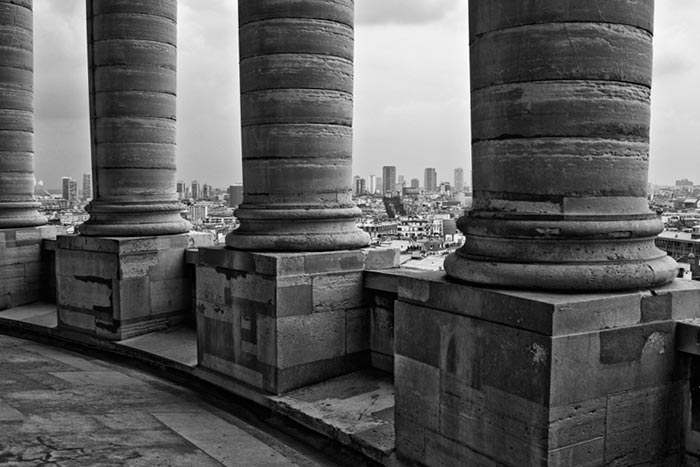
© 2009 Randy Romano. All rights reserved.
Pillars of the Pantheon
Paris, France
While traveling on vacation, most of us bring our camera in hopes of capturing beautiful images of exotic locations, yet somehow, many can come up short. Being in a new location can become mesmerizing, as it over stimulates our senses—new sights, new sounds and scents, so many colors, so many new subjects and interests to pursue and photograph. Yet, through careful observation and simplicity of camera gear we can almost always make good images.
After focusing on raising a family, you may find, as I did, that you now have the opportunities to experience the world of travel with your family or friends. Of course the camera gear comes with you, but your photography time may be limited as you share and enjoy not just the exciting experience and sites, but the precious and memorable time you have with others. It may be more of a challenge, but that doesn’t mean that you can’t be successful in bringing home some great images. Adaptation is the rule.
Here are a few suggestions and tips you can use to make your vacation photo experiences successful.
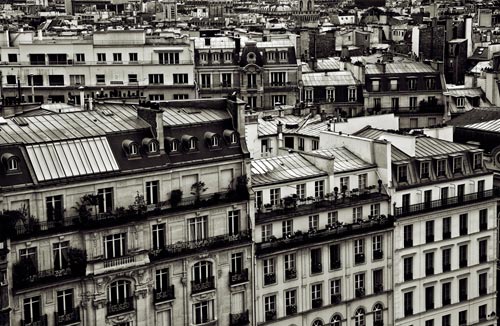
© 2009 Randy Romano. All rights reserved.
Housing Rows
Paris, France
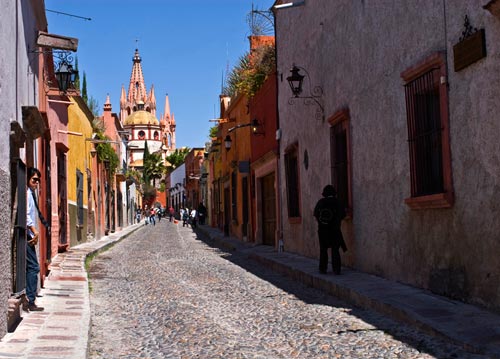
© 2011 Randy Romano. All rights reserved.
Road to the Towers
San Miguel de Allende, Mexico
Camera Gear Simplicity
There are so many articles, books and web sites telling photographers what gear to take while traveling, that I finally concluded: Each person has to make their own choices according to their individual travel plans. Since this wasn’t a paid travel assignment, I wasn’t as concerned about backup cameras and wasn’t going to get paranoid over losing images.
I decided to go with simplicity and be unencumbered—reduce the luggage and have the capability to move freely. I chose one camera body (an old workhorse–Nikon D200), 2 lenses (35 to 70 mm, F2.8 and a 70 to 300 mm, F4 to 5.6), a flash, extra batteries, CF cards and of course rechargers. I felt confident in the equipment I was taking. Over the past few years, these tools have never let me down on numerous assignments for clients.
I wanted to concentrate on making images with a camera in hand at all times. I knew that I would be distracted enough with the new landscapes and cultures, that I didn’t want too many equipment decisions to bog me down. I wanted to travel light and make lots of images on the fly.
Work the Subject
It’s important to look carefully for a subject worth shooting. Once found, try to block out what is going on around you and force yourself to concentrate on the subject that interests you. Work the subject to the best of your ability and work it as hard as possible for whatever length of time you have. Making a substantial number of images is highly recommended. After all, digital images are free, and taking more images forces you to explore the subject. Hopefully your traveling companions will understand and indulge your passion for photography.
Filtering Out the Landscape Noise
Always bring your camera with you while taking in the sites and carry it so you’re ready to shoot. To successfully do this, make sure your lens choice isn’t a long heavy lens, which would make it more difficult to carry at your side or around your neck. I found the combination of equipment I took, mentioned above, to be great. Working with one lens at a time forces you to make creative choices and to think harder about the subjects you capture. Challenge creates a need for creative thinking and the freedom from having lots of equipment develops your creativity faster and with more ease.
One of the best ways to filter out the landscape noise involves finding the best light which engages your senses. And this is usually of the late day or early morning variety. However good light is available at all times of the day, so constantly look around you and gravitate to scenes and subjects that are bathed in the best light available.
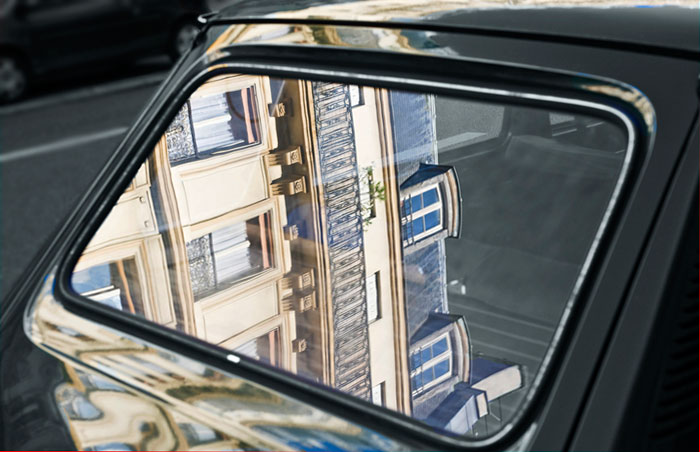
© 2009 Randy Romano. All rights reserved.
The Unexpected….
Paris, France
TIPS:
1.) On bright sunny days watch for intense shadows, light reflections or diffused light under buildings or trees.
2.) If the contrast from light to dark is too strong, you can always use fill flash to assist the natural light. Make sure you subdue it, so it doesn’t look obvious. I also like to put a yellow gel over my flash to create a more natural sun effect.
3.) On dull, cloudy days with less contrast, try to capture those people shots, as the light is soft and non-directional.
Utilize all your lighting opportunities and never say no to photography, especially if you are in a special vacation location.
Another way to filter out landscape noise is to look for interesting shapes and patterns. Architecture has fantastic shapes and lines and by finding these and isolating them, you can create some very interesting images. Look hard for triangles, circles or rectangles in striking subjects or beautiful cityscapes. Once you set your sites on capturing a shape, they’ll begin to pop out at you everywhere.

© 2011 Randy Romano. All rights reserved.
Steps of Honour
San Miguel de Allende, Mexico
Photographing and Isolating People in the Frame
In any travel location there are many interesting places to go to observe people–fellow tourists and locals alike.
TIPS:
1.) Look first for either an interesting, simple background or go for the busy street scenes—the choice is yours to make.
2.) Make sure the location is well lit, and then wait as long as possible for people to move into your picture space. Generally most tourist locations have many people moving around and checking out the sites or going about their daily tasks.
3.) It is essential to have a good angle and shutter speed plan in order to be successful. Stopping the person and clearly showing them walk through the picture frame, means a shutter speed of 1/250 or greater. On the other hand, if you want to add some creativity to your image, you may want the person to be blurred out or in an abstract motion form, so set your shutter speed in the range of 1/60 to 1/15.
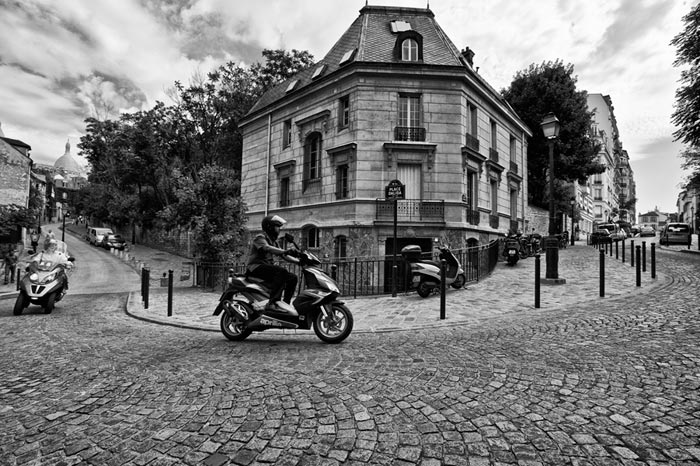
© 2009 Randy Romano. All rights reserved.
Scooting Around on Cobblestone
Paris, France
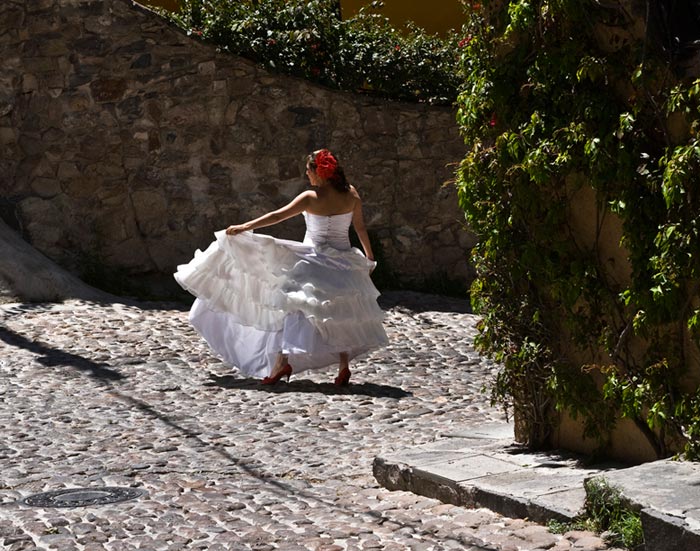
© 2011 Randy Romano. All rights reserved.
Dance of the Bride
San Miguel de Allende, Mexico
People Location Ideas…
Going to local markets is not only fun adventure for family and friends, but it is a really good place to photograph people. You’ll be able to observe how the native residents interact while buying food. Generally the merchants will be okay with you photographing if you buy food as you go and are polite. And after all, who can resist buying local produce. Things to look for in the market are colors, shapes and patterns.
Squares, parks or any public spaces are also great places to find people interacting with the urban environment. In France urban parks were like living lungs within the city. People were relaxed and readily enjoying life and this made it extremely easy to get great images of Parisians interacting with their environment.
TIP:
Find a subject that has graphic possibilities and start making images. Try not to over think the images–just react to what appeals to your gut instincts.
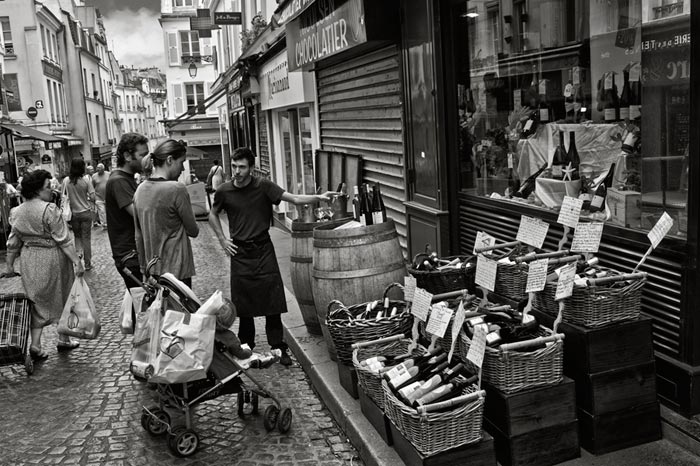
© 2009 Randy Romano. All rights reserved.
Morning Tasting
Paris, France
Distinctive Angles
Of course your friends and family will want to visit the most popular tourist attractions in an area, so it helps to do some research on a location before you go. And as a photographer, you’ll want to look at the most popular images and angles of iconic landmarks. This gives you a base with which to begin your unique vision quest.
Many locations in tourist destinations have already been well photographed from a variety of angles. Places like the Eiffel Tower have had almost every angle utilized by other photographers. If you want a typical shot for documentary purposes, go ahead and take it for your records, but in my mind it is really important to give a unique interpretation of your chosen subjects–dare to be different. Never believe you aren’t capable of creating an image that is new or unique. We all have a distinct way of looking at the world.
Work your subject from as many different angles as possible–try getting low, get up high if the opportunity is there, shoot from underneath your subject, go off centre, tip yourself or your camera sideways… Find the best angle through trial and error and be worry free about whether or not it was a successful shot, because remember, the digital images are free. You may not have the opportunity to return to that location, so just have fun experimenting while you can.
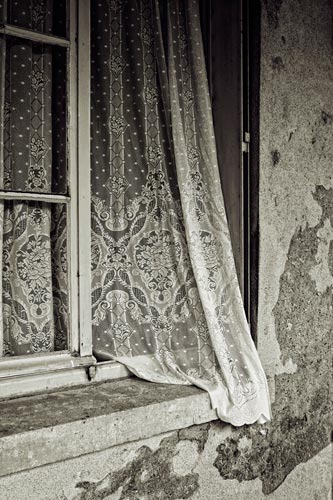
© 2009 Randy Romano. All rights reserved.
Curtain Serendipity
Paris, France

© 2011 Randy Romano. All rights reserved.
This way…
San Miguel de Allende, Mexico
In your travels try to look for smaller, unique subjects within the big picture. For example, when I was in Paris, we were walking in a plaza of older buildings and a window was open with one lace curtain blowing in the wind. The textures of the curtain and the stonework of the building interacted wonderfully with the diffused natural light. I keyed in on this smaller subject, shooting many frames, and this subject somehow came to be representative of my Parisian experience. Try to find interesting subjects to isolate and then take the time needed to work with the subject. If you rush things too quickly, you won’t have the time to find the best angles, or just understand what it is that draws you to the subject in the first place.
Another example of this is found in an image I made in San Miguel de Allende. Street signs are mounted on buildings at most corners. Finding an interesting sign with a colorful background, I worked a variety of angles eventually finding the right angle that isolated both sides of the corner, as well as the signs.
In Summary…
1.) Try to prepare simply by not burdening yourself with a lot of equipment.
2.) It is best to always have a camera at your side to utilize unique opportunities.
3.) Give yourself time to work your subject.
4.) Look for interesting locations and people, the best light, distinct overall or isolated subjects, and unique angles.
5.) Most importantly, have fun with your travel companions and don’t pressure yourself to come back with iconic photos. Relax and let yourself and the camera work well together. In this way you will get successful and unique photographs that will separate you from the many other photographers.
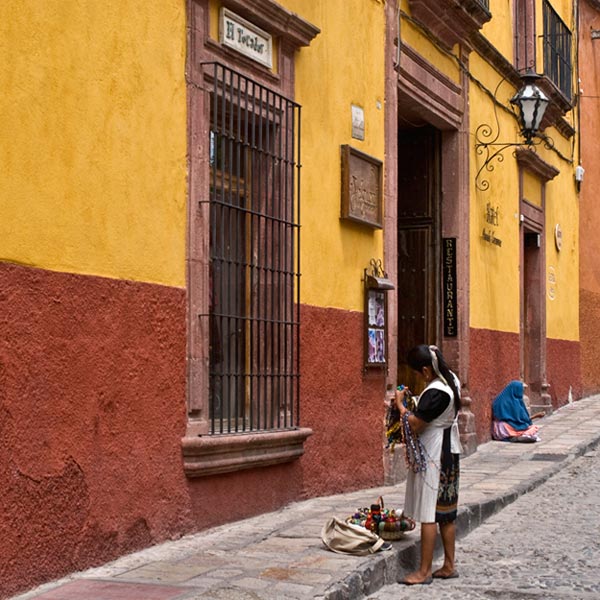
© 2011 Randy Romano. All rights reserved.
Preparing for the day…
San Miguel de Allende, Mexico
By Randall Romano
All text & photos: © 2011 Randall Romano. All rights reserved.

Leave a Reply